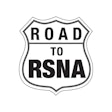Tuesday, December 2 | 3:40 p.m.-3:50 p.m. | T7-SSIN03-5 | Room S404
Researchers have developed and tested a liver MRI model and system that first predicts liver tumor imaging features and then integrates them into structured Liver Imaging Reporting and Data System (LI-RADS) reports.
The system uses concept-guided reasoning and graph-based modeling to generate structured LI-RADS-style reports, according to presenter Kenji Suzuki, PhD, and colleagues, who described it as a "clinically aligned, interpretable AI system."
To develop the system, the group started with the imaging data of 277 contrast-enhanced liver MRI studies annotated with LI-RADS features. The scans were from 114 patients, 107 with malignant tumors and 170 with benign tumors.
First, the group trained a LI-RADS prediction model to predict the presence or absence of typical imaging features encountered, including arterial phase hyperenhancement (APHE), nonperipheral "washout," corona enhancement, and restricted diffusion, to name a few. That model achieved an overall mean presence/absence classification accuracy of 0.84, the group reported.
Next, the predicted LI-RADS features were input into a tumor classification model. That model achieved an area under the curve (AUC) of 0.88 and outperformed several state-of-the-art deep-learning models, according to the group.
The system is designed to capture patterns that radiologists associate with malignancy, such as the presence of restricted diffusion without peripheral globular enhancement. Then, the system outputs both a malignancy likelihood and an interpretable report aligned with the LI-RADS standard, the group explained.
Ultimately, the system models concept relationships, enhances clinical transparency, and supports radiologist decision-making, they said. Attend this Tuesday afternoon session to hear more about the system and its validation.



